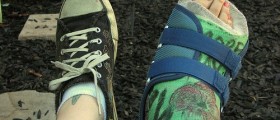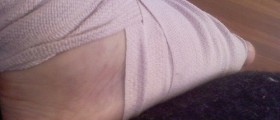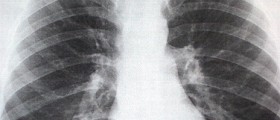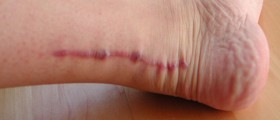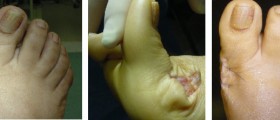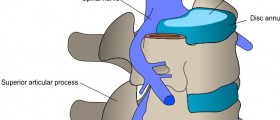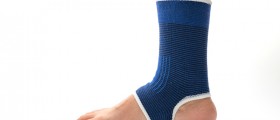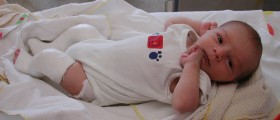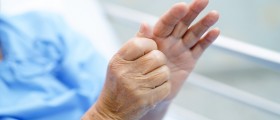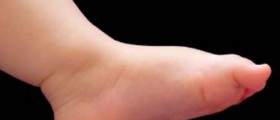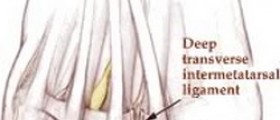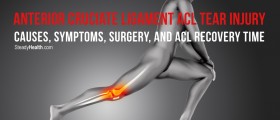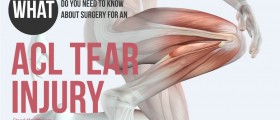I am wondering if anyone has any info or experience with a fairly new technique called ceramic implant arthroplasty instead of fusion. It is basically an artificial joint. I am a new poster to this forum, but have been reading all your stories for the past 18 months since my lisfranc injury happened. My timeline is: 9/17/07 accident, tripped in kitchen. 9/24/07 had surgery, implanted 3 screws, 2 pins. 1/29/08 surgery to remove hardware. 6 mos. of PT starting in Dec. of '07. Sept. of '08 still having lots of pain and limping. Decided to seek another opinion in Boston. Told that severe arthritis was in the joint. Gave me a steroid shot which completely made me pain free and 100% back to pre-injury activity. Jan. '09 shot wore off. Back to extreme pain. Doc says I cannot keep getting the shots as they will not be effective and can damage bones & ligaments. Suggesting this new ceramic implant. Any info on this or fusion would be appreciated. Thanks!!
Loading...
hello everyone.... i have been reading this post for a year or two as i have a lisfranc fracture/dislocation from about 8 years ago that periodically is annoying... leading me to seek solace and/or solutions. basically i had a lisfranc fracture/disolacation in 2001 after a long rockclimbing fall. i had a very quick repair (i have expertise that i cannot comment on here and immediately iced the injury and went straight to the hospital) and had a reasonably good outcome due to having minimal swellling.
there are many things i learned along the way that may be useful to others, i believe. first - one should restore normal foot biomechanics as much as possible. i spent many many years walking on a slightly flat footed where i twist my foot out subtly at the end of a stride (the adductory tiwst or whip), which was damaging for the lateral lisfranc joint (i had a full dislocation).
second - prolotherapy can be very helpful in reversing arthritis. i have a lot of irritating problems in my lateral foot that i have had treated with prolotherapy and it has been better for brief periods or longer. i have even had my jaw treated for tmj issues with good results. for those of you worried about the stability of your lisfranc ligment(s) after a repair you can prolotherapy done on them as well. i have had unusual parts of my foot injected, including the lisfranc joint (plantar side) which contributed to improved strength in my foot ligaments. i have also had my plantar fascia injected as well with a good outcome following prolonged difficulties with plantar fasciitis
third - it is probably good to do what you can to maintain your articular cartilage through supplements, etc. i take something called lyprinol, which is probably helpful (a special extract of omega 3's from mussles). there is also a boswelia extract - 5-loxin. MSM is good in high doses. there is limited evidence for chondroitin/glucoasmine... if you use it is should be the Doxa type.
Fourth - exercises and mobility are good as well. having tight hamstrings is very bad for a potentially arthritic/midfoot joint-compromised foot as a lot of stress gets directed there.
Fifth - good orthotics are key... plan to pay many hundreds of dollars for them. The foot has to be supported in the right place. I have gone through nearly 10 orthotics and was in process of making my own second pair (whih incidentally was better than any pair i had made for me prior to that) when i came across a brand called sole supports (solesupports.com). These are very unique and have to be cast by a good podiatrist. There likely is no substitute for this brand as the inventor has challenged some of the basic dogma about foot mechanics - they will feel very odd/uncomfortable at first. Also - realize that podiatrists that were trained less than 15 years ago were not trained in foot biomechanics as that was taken out of the curriculum at that time. If after your lisfranc repair your biomechanics are off - such as you excessively pronate like i did - you should try to get a compensating orthotic such that which i just mentioned. I ignored this for many years and ended up with metatarsalgia (actually a distal capsulitis and distal plantar fasciitis, but never properly diagnosed), recurrent plantar fasciitis with ligament strains, and medial foot numbness and pain due to posterior tibial tendon dysfunction. Most of these later issues got remarkably better from prolotherapy and the correct orthotic as most most were due to biomechanical problems. I don't think orthotics will necessarily improve pain from an arthritic lisfranc joint however, so keep your expectations in line.
As for my foot - I do still have problems as I have bone spurs along the lisfranc joint - especially the lateral side, the function of which is pretty important.
Currently I am considering getting the bone spurs removed to facilitate mobility, decrease pain, etc. If anyone has had this experience, especially having bone spurs removed on the lateral side of the mid-foot, please let me know of your outcome. My email is _[removed]_ for that or questions.
there are many things i learned along the way that may be useful to others, i believe. first - one should restore normal foot biomechanics as much as possible. i spent many many years walking on a slightly flat footed where i twist my foot out subtly at the end of a stride (the adductory tiwst or whip), which was damaging for the lateral lisfranc joint (i had a full dislocation).
second - prolotherapy can be very helpful in reversing arthritis. i have a lot of irritating problems in my lateral foot that i have had treated with prolotherapy and it has been better for brief periods or longer. i have even had my jaw treated for tmj issues with good results. for those of you worried about the stability of your lisfranc ligment(s) after a repair you can prolotherapy done on them as well. i have had unusual parts of my foot injected, including the lisfranc joint (plantar side) which contributed to improved strength in my foot ligaments. i have also had my plantar fascia injected as well with a good outcome following prolonged difficulties with plantar fasciitis
third - it is probably good to do what you can to maintain your articular cartilage through supplements, etc. i take something called lyprinol, which is probably helpful (a special extract of omega 3's from mussles). there is also a boswelia extract - 5-loxin. MSM is good in high doses. there is limited evidence for chondroitin/glucoasmine... if you use it is should be the Doxa type.
Fourth - exercises and mobility are good as well. having tight hamstrings is very bad for a potentially arthritic/midfoot joint-compromised foot as a lot of stress gets directed there.
Fifth - good orthotics are key... plan to pay many hundreds of dollars for them. The foot has to be supported in the right place. I have gone through nearly 10 orthotics and was in process of making my own second pair (whih incidentally was better than any pair i had made for me prior to that) when i came across a brand called sole supports (solesupports.com). These are very unique and have to be cast by a good podiatrist. There likely is no substitute for this brand as the inventor has challenged some of the basic dogma about foot mechanics - they will feel very odd/uncomfortable at first. Also - realize that podiatrists that were trained less than 15 years ago were not trained in foot biomechanics as that was taken out of the curriculum at that time. If after your lisfranc repair your biomechanics are off - such as you excessively pronate like i did - you should try to get a compensating orthotic such that which i just mentioned. I ignored this for many years and ended up with metatarsalgia (actually a distal capsulitis and distal plantar fasciitis, but never properly diagnosed), recurrent plantar fasciitis with ligament strains, and medial foot numbness and pain due to posterior tibial tendon dysfunction. Most of these later issues got remarkably better from prolotherapy and the correct orthotic as most most were due to biomechanical problems. I don't think orthotics will necessarily improve pain from an arthritic lisfranc joint however, so keep your expectations in line.
As for my foot - I do still have problems as I have bone spurs along the lisfranc joint - especially the lateral side, the function of which is pretty important.
Currently I am considering getting the bone spurs removed to facilitate mobility, decrease pain, etc. If anyone has had this experience, especially having bone spurs removed on the lateral side of the mid-foot, please let me know of your outcome. My email is _[removed]_ for that or questions.
Loading...
hello everyone.... i have been reading posts on this site for lisfranc issues for a year or two as i have a lisfranc fracture/dislocation from about 8 years ago that periodically is annoying... leading me to seek solace and/or solutions. basically i had a lisfranc fracture/disolacation in 2001 after a long rockclimbing fall. i had a very quick repair (i have expertise that i cannot comment on here and immediately iced the injury and went straight to the hospital) and had a reasonably good outcome due to having minimal swellling.
there are many things i learned along the way that may be useful to others, i believe.
first - one should restore normal foot biomechanics as much as possible. i spent many many years walking on a slightly flat footed where i twist my foot out subtly at the end of a stride (the adductory tiwst or whip), which was damaging for the lateral lisfranc joint (i had a full dislocation).
second - prolotherapy can be very helpful in reversing arthritis. i have a lot of irritating problems in my lateral foot that i have had treated with prolotherapy and it has been better for brief periods or longer. i have even had my jaw treated for tmj issues with good results. for those of you worried about the stability of your lisfranc ligment(s) after a repair you can prolotherapy done on them as well. i have had unusual parts of my foot injected, including the lisfranc joint (plantar side) which contributed to improved strength in my foot ligaments. i have also had my plantar fascia injected as well with a good outcome following prolonged difficulties with plantar fasciitis
third - it is probably good to do what you can to maintain your articular cartilage through supplements, etc. i take something called lyprinol, which is probably helpful (a special extract of omega 3's from mussles). there is also a boswelia extract - 5-loxin. MSM is good in high doses. there is limited evidence for chondroitin/glucoasmine... if you use it is should be the Doxa type. NSAIDs are probably good as well if used in moderation.
Fourth - exercises and mobility are good as well. having tight hamstrings is very bad for a potentially arthritic/midfoot joint-compromised foot as a lot of stress gets directed there.
Fifth - good orthotics are key... plan to pay many hundreds of dollars for them. The foot has to be supported in the right place. I have gone through nearly 10 orthotics and was in process of making my own second pair (whih incidentally was better than any pair i had made for me prior to that) when i came across a brand called sole supports. These are very unique and have to be cast by a good podiatrist. There likely is no substitute for this brand as the inventor has challenged some of the basic dogma about foot mechanics - they will feel very odd/uncomfortable at first. Also - realize that podiatrists that were trained less than 15 years ago were not trained in foot biomechanics as that was taken out of the curriculum at that time. If after your lisfranc repair your biomechanics are off - such as you excessively pronate like i did - you should try to get a compensating orthotic such that which i just mentioned. I ignored this for many years and ended up with metatarsalgia (actually a distal capsulitis and distal plantar fasciitis, but never properly diagnosed), recurrent plantar fasciitis with ligament strains, and medial foot numbness and pain due to posterior tibial tendon dysfunction. Most of these later issues got remarkably better from prolotherapy and the correct orthotic as most most were due to biomechanical problems. I don't think orthotics will necessarily improve pain from an arthritic lisfranc joint however, so keep your expectations in line.
As for my foot - I do still have problems as I have bone spurs along the lisfranc joint - especially the lateral side, the function of which is pretty important.
Currently I am considering getting the bone spurs removed to facilitate mobility, decrease pain, etc. If anyone has had this experience, especially having bone spurs removed on the lateral side of the mid-foot, please let me know of your outcome. I hope this is helpful for people.
there are many things i learned along the way that may be useful to others, i believe.
first - one should restore normal foot biomechanics as much as possible. i spent many many years walking on a slightly flat footed where i twist my foot out subtly at the end of a stride (the adductory tiwst or whip), which was damaging for the lateral lisfranc joint (i had a full dislocation).
second - prolotherapy can be very helpful in reversing arthritis. i have a lot of irritating problems in my lateral foot that i have had treated with prolotherapy and it has been better for brief periods or longer. i have even had my jaw treated for tmj issues with good results. for those of you worried about the stability of your lisfranc ligment(s) after a repair you can prolotherapy done on them as well. i have had unusual parts of my foot injected, including the lisfranc joint (plantar side) which contributed to improved strength in my foot ligaments. i have also had my plantar fascia injected as well with a good outcome following prolonged difficulties with plantar fasciitis
third - it is probably good to do what you can to maintain your articular cartilage through supplements, etc. i take something called lyprinol, which is probably helpful (a special extract of omega 3's from mussles). there is also a boswelia extract - 5-loxin. MSM is good in high doses. there is limited evidence for chondroitin/glucoasmine... if you use it is should be the Doxa type. NSAIDs are probably good as well if used in moderation.
Fourth - exercises and mobility are good as well. having tight hamstrings is very bad for a potentially arthritic/midfoot joint-compromised foot as a lot of stress gets directed there.
Fifth - good orthotics are key... plan to pay many hundreds of dollars for them. The foot has to be supported in the right place. I have gone through nearly 10 orthotics and was in process of making my own second pair (whih incidentally was better than any pair i had made for me prior to that) when i came across a brand called sole supports. These are very unique and have to be cast by a good podiatrist. There likely is no substitute for this brand as the inventor has challenged some of the basic dogma about foot mechanics - they will feel very odd/uncomfortable at first. Also - realize that podiatrists that were trained less than 15 years ago were not trained in foot biomechanics as that was taken out of the curriculum at that time. If after your lisfranc repair your biomechanics are off - such as you excessively pronate like i did - you should try to get a compensating orthotic such that which i just mentioned. I ignored this for many years and ended up with metatarsalgia (actually a distal capsulitis and distal plantar fasciitis, but never properly diagnosed), recurrent plantar fasciitis with ligament strains, and medial foot numbness and pain due to posterior tibial tendon dysfunction. Most of these later issues got remarkably better from prolotherapy and the correct orthotic as most most were due to biomechanical problems. I don't think orthotics will necessarily improve pain from an arthritic lisfranc joint however, so keep your expectations in line.
As for my foot - I do still have problems as I have bone spurs along the lisfranc joint - especially the lateral side, the function of which is pretty important.
Currently I am considering getting the bone spurs removed to facilitate mobility, decrease pain, etc. If anyone has had this experience, especially having bone spurs removed on the lateral side of the mid-foot, please let me know of your outcome. I hope this is helpful for people.
Loading...
Hi board,
I am currently 11 weeks post-fusion surgery. I had surgery on 12/18/08 to fuse my 1st and 2nd tarsal/metatarsal joint following a primarily ligamentous lisfranc injury. The initial injury occurred on 11/26/08. I went immediately to the emergency room and had x-rays taken. I was told that there was no break and that I had a sprained foot. I was on crutches for three days and then started walking on it again which was very painful. I knew that the injury would require more attention so I saw an orthopedic surgeon on 12/2/08. X-rays were taken which showed a 6mm gap in the tarsal/metatarsal joint. My doctor said that there were two options, ORIF or fusion with bone graft. I researched both options and determined that for my active lifestyle, the fusion with bone graft offered me the best chance of getting back to a high level of activity. I had a second opinion and the x-rays were negative because they were non-weight bearing. However, from examining the foot, the second surgeon agreed that for my lifestyle, the fusion would be the better option.
On 12/18/08 I had the surgery. They took bone from my leg and packed it between my 1st and 2nd tarsal/metatarsal joints. The doctor used 5 screws to fuse the bone. I was completely off of my feet for the first two weeks after the surgery, only getting up to use the bathroom. I was in a hard cast after the surgery until 12/30/08. I was given an aircast after that but was still completely non-weight bearing. On 1/18/09 I went back to the doctor for a check up and was told to begin weaning off of the crutches. Over the course of the next week, I began total weight bearing while still wearing the aircast. I took the cast off to sleep and to shower but other than that, the cast was on all of the time.
I go back to the doctor on 3/10/09 and can hopefully begin walking without the aircast. I have started swimming again and I do feel a bit of tenderness in the area that was fused. The pain is getting less and it's feeling more comfortable each week.
The main thing I am worrying about at this point is wondering whether the bone is actually fusing. I had a CT scan this past Tuesday and hopefully it shows that the fusion has taken. It's been frustrating but I won't stop until I am able to run another marathon. Good luck to all of you who are going through this and I'm always encouraged by success stories.
I am currently 11 weeks post-fusion surgery. I had surgery on 12/18/08 to fuse my 1st and 2nd tarsal/metatarsal joint following a primarily ligamentous lisfranc injury. The initial injury occurred on 11/26/08. I went immediately to the emergency room and had x-rays taken. I was told that there was no break and that I had a sprained foot. I was on crutches for three days and then started walking on it again which was very painful. I knew that the injury would require more attention so I saw an orthopedic surgeon on 12/2/08. X-rays were taken which showed a 6mm gap in the tarsal/metatarsal joint. My doctor said that there were two options, ORIF or fusion with bone graft. I researched both options and determined that for my active lifestyle, the fusion with bone graft offered me the best chance of getting back to a high level of activity. I had a second opinion and the x-rays were negative because they were non-weight bearing. However, from examining the foot, the second surgeon agreed that for my lifestyle, the fusion would be the better option.
On 12/18/08 I had the surgery. They took bone from my leg and packed it between my 1st and 2nd tarsal/metatarsal joints. The doctor used 5 screws to fuse the bone. I was completely off of my feet for the first two weeks after the surgery, only getting up to use the bathroom. I was in a hard cast after the surgery until 12/30/08. I was given an aircast after that but was still completely non-weight bearing. On 1/18/09 I went back to the doctor for a check up and was told to begin weaning off of the crutches. Over the course of the next week, I began total weight bearing while still wearing the aircast. I took the cast off to sleep and to shower but other than that, the cast was on all of the time.
I go back to the doctor on 3/10/09 and can hopefully begin walking without the aircast. I have started swimming again and I do feel a bit of tenderness in the area that was fused. The pain is getting less and it's feeling more comfortable each week.
The main thing I am worrying about at this point is wondering whether the bone is actually fusing. I had a CT scan this past Tuesday and hopefully it shows that the fusion has taken. It's been frustrating but I won't stop until I am able to run another marathon. Good luck to all of you who are going through this and I'm always encouraged by success stories.
Loading...
When I saw your xray it reminded me of what my foot looked like. I was involved in a bad car accident in Feb 08 and hit some on from behind. the impact hit my foot and shifted my mid foot forward. I was misdiagnosed for over 3 months before getting a 2nd opinion. I had surgery June 08. When my surgeron told me that he has done everything he could of me I was still in a walking boot. I have 5 screws in my foot that he planst to leave. I am highly depressed because I walk in constant pain. I wish there was something out there that could help. My family and friends see the pain I am in but dont have a clue on how this effects my daily life.
Loading...
I am also 10 weeks post fusion. First two mets and first two cuneiforms. Is this what you had too?
I Have been walking in the boot for two weeks now with little discomfort. I hope to be in a shoe in another week or so. Surgery was 12/29/08.
This is round 2 for me . ORIF did not work. I also had a 6mm gap.
I think you made the right decision with the fusion. I wish I had done the research The first time so I would have not had a years worth of horid pain. Keep us posted on the recovery.
Article FYI
orthosupersite.com/logreg/default.asp?tmpurl=/view.asp?rID=5767
I Have been walking in the boot for two weeks now with little discomfort. I hope to be in a shoe in another week or so. Surgery was 12/29/08.
This is round 2 for me . ORIF did not work. I also had a 6mm gap.
I think you made the right decision with the fusion. I wish I had done the research The first time so I would have not had a years worth of horid pain. Keep us posted on the recovery.
Article FYI
orthosupersite.com/logreg/default.asp?tmpurl=/view.asp?rID=5767
Loading...
Hi Deano73
How are you progressing with your fusion. My daughter is a high level gymnast who was diagnosed with a lisfranc sprain/dislocation 7 months ago. She went the conservative route since the gap between the first and second metatarsals was borderline at 2mm and all else was lined up and intact. She is now able to walk, rise on her toes, jog in shoes and do all daily activities but high impact activities cause her a lot of pain. She has been advised by one surgeon that the next step for her is fusion if she wants to try continue in her sport. (She has been recruited by a top college) Another surgeon wants to do the tightrope. I have done a lot of research and see fusion as having a good success rate for eliminating or lessening pain but I am worried about the loss of movement in the joint. It is meant to be only 5 degrees of movement. Do you know of any other fusion patients who can now rise on their toes, run barefoot, and spring off their injured foot? She is due for surgery in the next couple of weeks and we are still unsure if fusion would work for her sport. Anyone else out there with some insight. Write soon please.
Deano73 maybe I could email you?
Thanks
Worriedmom
How are you progressing with your fusion. My daughter is a high level gymnast who was diagnosed with a lisfranc sprain/dislocation 7 months ago. She went the conservative route since the gap between the first and second metatarsals was borderline at 2mm and all else was lined up and intact. She is now able to walk, rise on her toes, jog in shoes and do all daily activities but high impact activities cause her a lot of pain. She has been advised by one surgeon that the next step for her is fusion if she wants to try continue in her sport. (She has been recruited by a top college) Another surgeon wants to do the tightrope. I have done a lot of research and see fusion as having a good success rate for eliminating or lessening pain but I am worried about the loss of movement in the joint. It is meant to be only 5 degrees of movement. Do you know of any other fusion patients who can now rise on their toes, run barefoot, and spring off their injured foot? She is due for surgery in the next couple of weeks and we are still unsure if fusion would work for her sport. Anyone else out there with some insight. Write soon please.
Deano73 maybe I could email you?
Thanks
Worriedmom
Loading...
gymnasticsnz, I am not sure I will be of any help here or not. I am no where nearly as active as a gymnast and I am 43 years old male. I too had a fusion done after the first Lisfranc repair did not take and I was in constant pain. It has been 2 years now since my fusion surgery and I am probably about the best I am ever going to be on my foot now.
I would imagine your daughter maybe feeling the beginning of arthitis starting in her foot. This is common among people with this type of injury. If she has the fusion there is some movement changes in that foot she would certainly have to get use to at first. Her ankle will pick up some of that movement that the fused joint use to do. Most of this she will feel and adjust to once she starts walking again. As a gymnast she would definately have to watch her ankle and keep it strong and flexible. As long as she has no toe damage with stiffness from the injury or surgery I would think she should be able to rise on her toes again. I had stiffness occur in my first 2 toes from the very first time I got this injury so this is something I have never tried to really do much. Even with my 2 stiff toes I can raise up on my toes if I am trying to reach for something. That is about the best I can do for you for that answer. I can go barefoot with no real issues. I do not do it for lng periods of time but for a couple hours I am fine. She may feel a slight difference in her feet if she losses some of her arch. For this reason I tend to wear orthodics in my shoes all the time, for that little extra arch support.
I wish I could answer more of your questions but, as a gymnanst, she would be putting her foot through much more than I have ever done. Being that she is young she may come through the fusion and rehab quite well and with some minor adjustments still be able to proceed with her goals.
I personaly am glad I had the fusion done because the pain was too much for me after the arthitis starting after my first Lisfranc repair. Even the worst day with the current fused foot I have now would have been considered a good day for me had I not had the fusion surgery and tried to live with is the way is was.
I would imagine your daughter maybe feeling the beginning of arthitis starting in her foot. This is common among people with this type of injury. If she has the fusion there is some movement changes in that foot she would certainly have to get use to at first. Her ankle will pick up some of that movement that the fused joint use to do. Most of this she will feel and adjust to once she starts walking again. As a gymnast she would definately have to watch her ankle and keep it strong and flexible. As long as she has no toe damage with stiffness from the injury or surgery I would think she should be able to rise on her toes again. I had stiffness occur in my first 2 toes from the very first time I got this injury so this is something I have never tried to really do much. Even with my 2 stiff toes I can raise up on my toes if I am trying to reach for something. That is about the best I can do for you for that answer. I can go barefoot with no real issues. I do not do it for lng periods of time but for a couple hours I am fine. She may feel a slight difference in her feet if she losses some of her arch. For this reason I tend to wear orthodics in my shoes all the time, for that little extra arch support.
I wish I could answer more of your questions but, as a gymnanst, she would be putting her foot through much more than I have ever done. Being that she is young she may come through the fusion and rehab quite well and with some minor adjustments still be able to proceed with her goals.
I personaly am glad I had the fusion done because the pain was too much for me after the arthitis starting after my first Lisfranc repair. Even the worst day with the current fused foot I have now would have been considered a good day for me had I not had the fusion surgery and tried to live with is the way is was.
Loading...
Hello gymnastics Mom,
It sounds like your daughter is a die hard gymnast and will not consider giving up the sport. With that said it does sound like the early stages of arthritis, which as you know does not improve with time. Only your Dr. can tell you for sure.
I did some research on the tightrope when I was looking at surgery and found that it is still relatively new and having some issues. The horizontal "rope" has given way or loosened on people that are active- Your daughter will take that to the next level with all the leaps and bounds.
The big ? is what joints/bones are they considering fusing. If she still has her arch then the fusion will preserve it where it is. I had to have mine rebuilt from waiting too long and its still a bit low. This makes me have to wear orthotics.
I would be happy to answer any ? you might have if you want to leve your email i'll check the boards thruout the day.
It sounds like your daughter is a die hard gymnast and will not consider giving up the sport. With that said it does sound like the early stages of arthritis, which as you know does not improve with time. Only your Dr. can tell you for sure.
I did some research on the tightrope when I was looking at surgery and found that it is still relatively new and having some issues. The horizontal "rope" has given way or loosened on people that are active- Your daughter will take that to the next level with all the leaps and bounds.
The big ? is what joints/bones are they considering fusing. If she still has her arch then the fusion will preserve it where it is. I had to have mine rebuilt from waiting too long and its still a bit low. This makes me have to wear orthotics.
I would be happy to answer any ? you might have if you want to leve your email i'll check the boards thruout the day.
Loading...
I injured my foot on a spiral staircase at work on 4-25-08.
I was diagnosed with a mid-foot sprain.
I had lots of helpful treatment then workers comp got crazy...
After a series of Negative MRI & X-rays & numerous arguments with workers comp and their DR. I went and got a fresh opinion yesterday after almost a year since my injury and no resolution.
I have a subtle LisFranc injury, which which will most likely require Fusion to get me back to being active again. I cannot believe I have been in pain this long and now I'm looking at time out of work and off my feet.
This is horrible, I was miserable and in pain since my injury gaining weight not being able to run any longer, eating too much etc.
I was just starting to get back to a better place in hopes that my foot could be fixed with some PT, orthodics, something!
now with this diagnosis my whole life will be turned upside down while i recover, my poor husband having to run everything and chase after our 2 kids. goodness.
Any advice from someone who has had fusion?
I am 25 and I was fairly active...
I was diagnosed with a mid-foot sprain.
I had lots of helpful treatment then workers comp got crazy...
After a series of Negative MRI & X-rays & numerous arguments with workers comp and their DR. I went and got a fresh opinion yesterday after almost a year since my injury and no resolution.
I have a subtle LisFranc injury, which which will most likely require Fusion to get me back to being active again. I cannot believe I have been in pain this long and now I'm looking at time out of work and off my feet.
This is horrible, I was miserable and in pain since my injury gaining weight not being able to run any longer, eating too much etc.
I was just starting to get back to a better place in hopes that my foot could be fixed with some PT, orthodics, something!
now with this diagnosis my whole life will be turned upside down while i recover, my poor husband having to run everything and chase after our 2 kids. goodness.
Any advice from someone who has had fusion?
I am 25 and I was fairly active...
Loading...
Thanks Deano7 and Fusion, your posts were helpful.
The fusion does feel like the way to go for a better chance of success afterwards. My daughter will most likely get the same bones fused as you did Deano. At the moment the doctors say that she is most likely in pain because her lisfranc ligament is lax and is allowing movement between the first two metatarsals on high impact activities especially. Her foot looks very much the same as her other foot. She has no loss of arch so thats good. She does get swelling after a long workout, however it is not really bad. She injured it when she landed awkwardly as she flipped on the beam. It was diagnosed as a midfoot sprain and she walked on it for a few days afterwards....should I say limped. Luckily I did some research and went back to request weightbearing x rays, after which she was diagnosed with a lisfranc sprain/dislocation. The dislocation probably went back into place as she walked on it immediately after the accident. Anyway 7 weeks NWB then 4 weeks in a boot and lots of rehabbing later she has been able to resume a lot of her training but suffers a lot of pain. She kept hoping for it to improve but it has not changed, in fact it is a little worse this past month. I will stay in touch with this board to see your progress Deano. Your experiences will be bound to help her.
It will be good to stay in touch with you too FUSION. Can you run barefoot?
I will be taking my daughter for a bone scan tommorrow. The doc wants this to see exactly where the movemnt is taking place for the fusion surgery.
Deano, will your screws stay in? Fusion, do you still have screws in?
Our doc says that he will leave the screw or screws (if she has 2) in unless they bother her.
I'd like any athletes who have had lisfranc fusion to post and let me know your results/story.
Gymnasticsnz
The fusion does feel like the way to go for a better chance of success afterwards. My daughter will most likely get the same bones fused as you did Deano. At the moment the doctors say that she is most likely in pain because her lisfranc ligament is lax and is allowing movement between the first two metatarsals on high impact activities especially. Her foot looks very much the same as her other foot. She has no loss of arch so thats good. She does get swelling after a long workout, however it is not really bad. She injured it when she landed awkwardly as she flipped on the beam. It was diagnosed as a midfoot sprain and she walked on it for a few days afterwards....should I say limped. Luckily I did some research and went back to request weightbearing x rays, after which she was diagnosed with a lisfranc sprain/dislocation. The dislocation probably went back into place as she walked on it immediately after the accident. Anyway 7 weeks NWB then 4 weeks in a boot and lots of rehabbing later she has been able to resume a lot of her training but suffers a lot of pain. She kept hoping for it to improve but it has not changed, in fact it is a little worse this past month. I will stay in touch with this board to see your progress Deano. Your experiences will be bound to help her.
It will be good to stay in touch with you too FUSION. Can you run barefoot?
I will be taking my daughter for a bone scan tommorrow. The doc wants this to see exactly where the movemnt is taking place for the fusion surgery.
Deano, will your screws stay in? Fusion, do you still have screws in?
Our doc says that he will leave the screw or screws (if she has 2) in unless they bother her.
I'd like any athletes who have had lisfranc fusion to post and let me know your results/story.
Gymnasticsnz
Loading...
I would be able to run barefoot had I not have knee problems as well. All my injuries occured from an automobile accident in Jan of 2006. Someone crossed traffic lanes and hit me head on. I broke my right leg femur bone and knee cap as well as I had the Lisfranc injury in my left foot. My knee has never healed correctly and it makes it difficult to run. However if I did not have the knee problem I feel there would not be an issue with this.
I still have 4 screws in my foot from my fusion 2 years ago. My doctor too decided to leave them in there. They are pretty much buried in the bone and are not a problem for me.
Good luck with your daughters injury.
I still have 4 screws in my foot from my fusion 2 years ago. My doctor too decided to leave them in there. They are pretty much buried in the bone and are not a problem for me.
Good luck with your daughters injury.
Loading...
Hey Gymnasticsmom,
Hope the bone scan went well. I also had the scan to determin where my pain was coming from. The scan showed the same thing ou Dr. is sayinf about your daughter. I had no arthritis( actually my joint cartilege looked really good) is was the gap in my lisfranc joint that had not held and i was in pain from the movement of the bones. A lot of pain.
The fusion was 4 bones/3 joints. first met to the first cuneiform, second met. to the second cuneiform and the first met to the second cuneiform.
Very similar to what your daughter has.
I am in a shoe now and feel pretty good. No more pain in that area. I just have to wake up the rest of the foot and I think I will be fine.
I fell 20' off the ladder on 3/23/08. I did a 10 K on 3/15/08 and the Boston marithon the year before. Tell your daughter that I know what its like to have your sports life turned upside down.
I also have an active job. Disability is killing me since I am really not a dissability type of guy.
I am happy( almost excited ) about the fusion results, but am still in the early stages of recovery. I dont really notice that much difference at all in the motion of the foot. That is the honest truth. I thought I would have a block for a foot, but it still flexes and moves with most of the stock motion that I was use to.
I hope your daughters pain will subside with whatever you decide, but I will let you know that if it were not for the fusion surgery--- I could not walk of do the things I want to do without pain. for any further ?'s.
**this post is edited by moderator *** *** private e-mails not allowed **
Please read our Terms of Use
Hope the bone scan went well. I also had the scan to determin where my pain was coming from. The scan showed the same thing ou Dr. is sayinf about your daughter. I had no arthritis( actually my joint cartilege looked really good) is was the gap in my lisfranc joint that had not held and i was in pain from the movement of the bones. A lot of pain.
The fusion was 4 bones/3 joints. first met to the first cuneiform, second met. to the second cuneiform and the first met to the second cuneiform.
Very similar to what your daughter has.
I am in a shoe now and feel pretty good. No more pain in that area. I just have to wake up the rest of the foot and I think I will be fine.
I fell 20' off the ladder on 3/23/08. I did a 10 K on 3/15/08 and the Boston marithon the year before. Tell your daughter that I know what its like to have your sports life turned upside down.
I also have an active job. Disability is killing me since I am really not a dissability type of guy.
I am happy( almost excited ) about the fusion results, but am still in the early stages of recovery. I dont really notice that much difference at all in the motion of the foot. That is the honest truth. I thought I would have a block for a foot, but it still flexes and moves with most of the stock motion that I was use to.
I hope your daughters pain will subside with whatever you decide, but I will let you know that if it were not for the fusion surgery--- I could not walk of do the things I want to do without pain. for any further ?'s.
**this post is edited by moderator *** *** private e-mails not allowed **
Please read our Terms of Use
Loading...
Has anyone ever heard of cutting a nerve in order to stop the pain in your feet. I am having my 3rd surgery to have a screw removed and if that doesnt stop the pain I am going to have the nerve cut. I dont want to do anything like that bc its permanent. Please anyone with feedback let me know.
Loading...
Hi board,
I've now been walking without the boot for two weeks. I just got my orthotics yesterday and they seem to be helping with some of the soreness. I've started physical therapy as well and I'm building up strength again. I think the biggest issue at this point is the tenderness where the screws stick out. There is some slight discomfort when I walk but I feel like it will diminish with time. It will be another four weeks before I can attempt to run but I'm feeling confident that it will work out. I have really good range of motion and I can't notice a significant decrease in the movement of my first and second metatarsal joints.
I've now been walking without the boot for two weeks. I just got my orthotics yesterday and they seem to be helping with some of the soreness. I've started physical therapy as well and I'm building up strength again. I think the biggest issue at this point is the tenderness where the screws stick out. There is some slight discomfort when I walk but I feel like it will diminish with time. It will be another four weeks before I can attempt to run but I'm feeling confident that it will work out. I have really good range of motion and I can't notice a significant decrease in the movement of my first and second metatarsal joints.
Loading...



